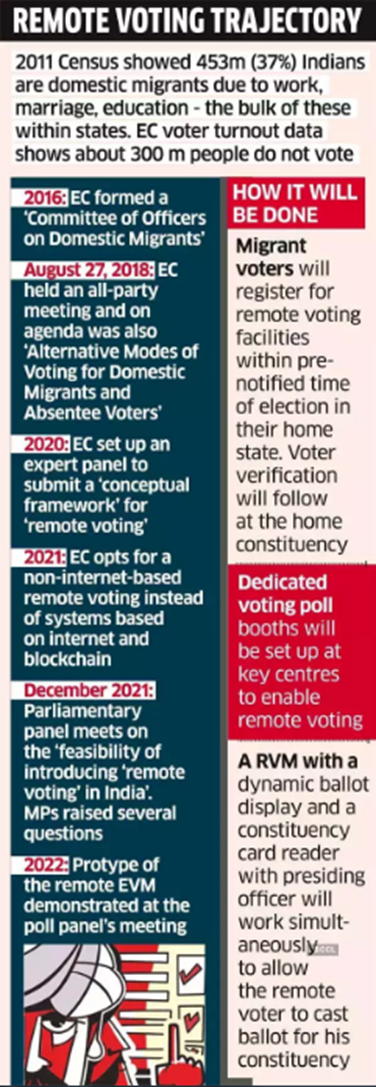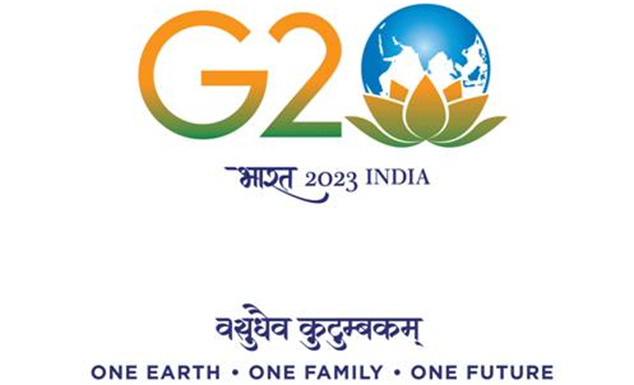Tuesday, 3rd January 2023
Mahadayi Issue - Edukemy Current Affairs
Context:
Goa and Karnataka have had long disputes over water sharing issues of the Mahadayi river.
- Recently, the Centre approved Karnataka's detailed project report (DPR) for the long pending Kalasa-Banduri drinking water project, which is facing opposition from Goa and Maharashtra.
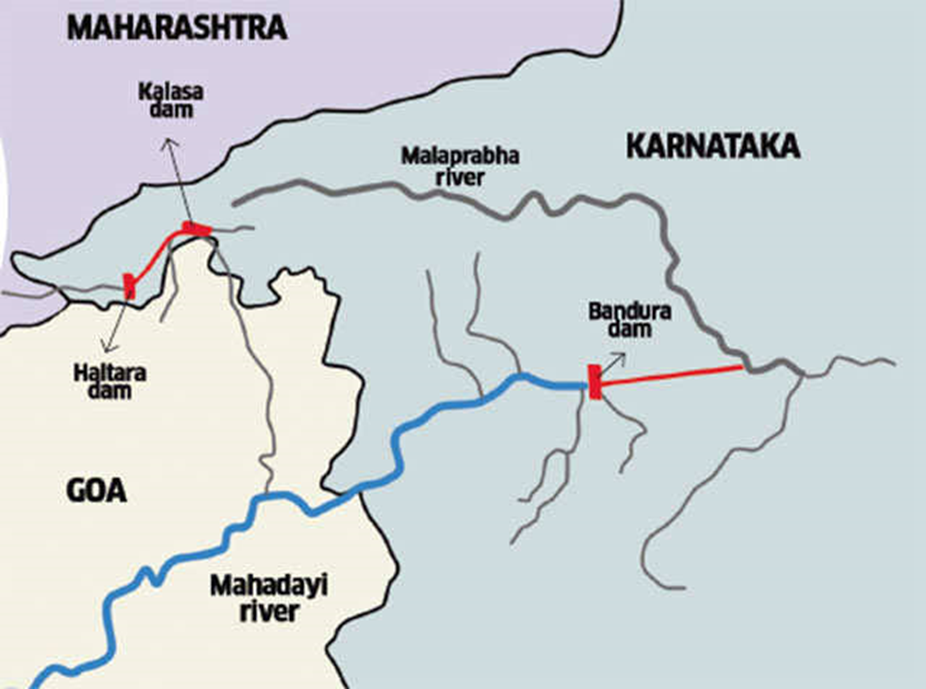
Where is Mahadayi?
- Mahadayi or Mhadei is the west-flowing river.
- Originates in Bhimgad Wildlife Sanctuary (Western Ghats), Belagavi district of Karnataka.
- Also called Mandovi in Goa.
- Tributaries of Mahadayi include, Kalasa Nala, Surla Nala, Haltar Nala, Poti Nala, Mahadayi Nala, Pansheer Nala, Bail Nala, Andher Nala and many more.
- Total Length: 117 km.
What's the issue?
Maharashtra, Goa and Karnataka's bordering districts rely on the Mahadayi River basin for water.
Goa's concerns:
The water in most of Goa's rivers is salty. As a result, the Mahadayi river, as a significant source of sweet water, receives even more importance.
- Any diversion of this river's water will have a negative influence on Goa's fragile ecosystem.
What Karnataka says?
The state of Karnataka claims that extra Mahadayi water is being squandered by pouring into the sea.
- As a result, the water should be transferred to Karnataka's water-scarce Malaprabha basin. This water could be used for drinking water, agriculture, irrigation, and power generation, among other things.
Kalasa Banduri Project:
- Initially proposed in 1989, the initiative will boost drinking water supplies in the three districts of Belagavi, Dharwad, and Gadag, according to the Karnataka government.
- It entails constructing a dam across the Kalasa and Banduri tributaries of the Mahadayi River to transfer water to the Malaprabha, a Krishna River tributary.
- The Malaprabha river provides drinking water to the districts of Dharwad, Belgaum, and Gadag.

A timeline of the issue- important Events:
1. Establishment of Mahadayi Tribunal:
The Mahadayi Water Dispute Tribunal was established in 2010 to investigate the situation.
- It allowed Karnataka to divert 13.45 TMC to the Malaprabha dam in 2018, rather than the 7.56 TMC originally planned.
- Karnataka was given permission to remove 1.18 TMC from the Kalasa nala and 2.27 TMC from the Banduri nala, respectively, from their original claims of 3.56 and 4 TMC.
- The tribunal was headed by N. Panchal.
2. Clearance by the Ministry of Environment and Forestry:
The Ministry of Environment and Forestry stated in 2019 that the project did not require any environmental approval because it aimed to meet drinking water demands. However, Goa refused to accept it.
3. 2020 Supreme Court verdict:
In 2020, the Supreme Court gave the Karnataka government temporary relief, allowing it to carry out the Mahadayi Water Dispute Tribunal's (MWDT) final order, which was challenged by Goa and Maharashtra.
|
Terms and Concepts: Inter-state water dispute: Art 262 provides for the adjudication of inter-state water disputes. It has two following provisions:
Under the provisions of the act, the central government has enacted, River boards act (1956) and Inter-state water disputes act (1956).
Provisions related to interstate river water disputes:
|
Suggested further reading:
Interstate River water Disputes:
- Need to resolve Inter-State river disputes in India.
- Water wars of Andhra Pradesh and Telangana.
- Interlinking of Rivers in India – Issues and Challenges.
- Mullaperiyar dam: Dispute between Tamil Nadu & Kerala
Forest Rights Act - Edukemy Current Affairs
Context:
National Commission for Scheduled Tribes (NCST) Chairperson Harsh Chouhan recently stated that the NCST's position on the new rules being in violation of the Forest Rights Act, 2006 "will be the same" despite the Environment Ministry dismissing these concerns. This is a sign of escalating conflict between the government and the ST body over the FCR 2022.
What's the issue?
A provision in the new rules proposes to do away with the consent clause for diversion of forest land for other purposes.
What has the Center said?
Forest (Conservation) Rules (FCR) 2022 were recently framed and released by the center under the Forest (Conservation) Act, 1980.
The Center says, Forest (Conservation) Act, 1980 and Forest Rights Act (FRA), 2006 - the two statutory processes are parallel and not dependent on each other.
- And hence, the NCST’s apprehension of these rules being in violation of the Forest Rights Act (FRA), 2006 was “not legally tenable”.
- Besides, the FCR 2022 already provides for diversion of forest land “only after fulfillment and compliance of all provisions, including settlement of rights under the Forest Rights Act” and also does not bar or infringe upon the operation of other laws mandating consent of Gram Sabhas.
What are the Forest Conservation Rules?
The Forest Conservation Act (FCA) of 1980 is put into effect via the Forest Conservation Rules (FCR).
- FCR outlines the process to be followed when diverting forest land for non-forestry purposes such as mining, railroad construction, road construction, and highway development.
- The Central government must approve land diverting for forest land that is larger than five hectares. This is done through a specifically formed committee known as the Forest Advisory Committee (FAC).
- Once the FAC is convinced and approves a proposal, it is sent to the State government of the area where the land is located, which is then responsible for ensuring that the requirements of the Forest Right Act, 2006 that safeguards the rights of tribal members and forest dwellers to their land, are met.
What do the FCR 2022 say?
On June 28, 2022, the most recent version of the rules—which combines revisions and court decisions over the years that have resulted in changes to the Act—was made available to the public.
- The Center claims that the new rules "streamline" the approvals procedure.
- The regulations allow for the cultivation of plantations by private parties, who can then sell them to businesses that must satisfy compensating forestation requirements as land.
- The government claims that this will both assist India in increasing its forest cover and address the issue of the States' inability to locate land within their borders for compensatory reasons.
What are the issues with FCR 2022?
Diluting to FRA, 2006: Without resolving issues about the rights of tribe members who lived there and forest inhabitants, it permitted the conversion of forest land to industrial use.
Will weaken forest tribal people: The most recent bone of contention is the revised Forest Conservation Rules' lack of language describing what would happen to indigenous people and communities that live in forests whose land would be divided up for construction projects.
The Center will put more pressure on the States to quicken the land diversion process. Once clearance of the forest is authorized, residents' requests for relocation will be disregarded.
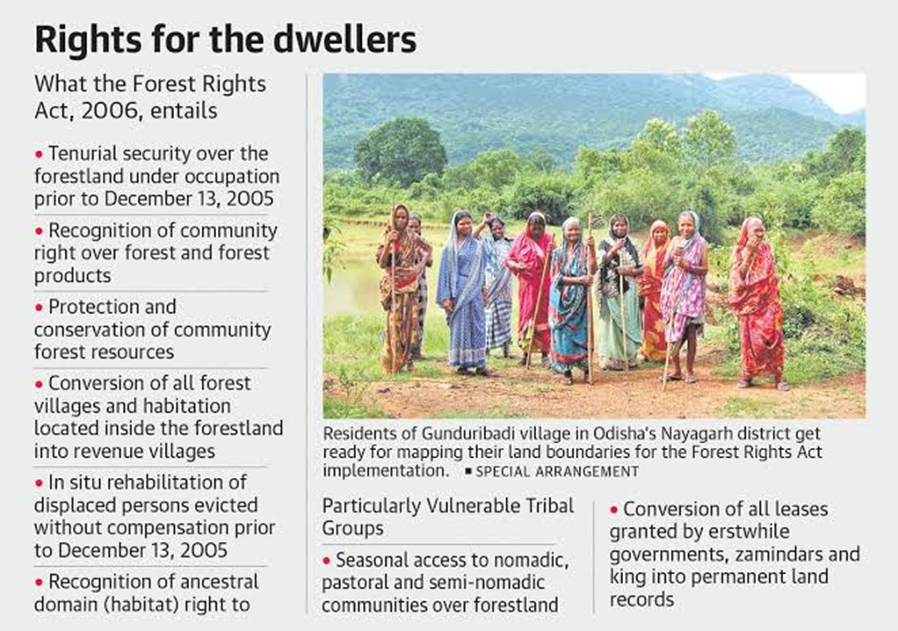
About the Forest Rights Act:
The Act passed in 2006 grants legal recognition to the rights of traditional forest dwelling communities and Other Traditional Forest Dweller (OTFD).
Rights under the Act:
Title rights - i.e. ownership - to land that is being farmed by tribals or forest dwellers as on 13 December 2005, subject to a maximum of 4 hectares; ownership is only for land that is actually being cultivated by the concerned family as on that date, meaning that no new lands are granted.
Use rights - to minor forest produce (also including ownership), to grazing areas, to pastoralist routes, etc.
Relief and development rights - to rehabilitation in case of illegal eviction or forced displacement; and to basic amenities, subject to restrictions for forest protection.
Forest management rights - to protect forests and wildlife.
Eligibility criteria:
According to Section 2(c) of Forest Rights Act (FRA), to qualify as Forest Dwelling Scheduled Tribe (FDST) and be eligible for recognition of rights under FRA, three conditions must be satisfied by the applicant/s, who could be “members or community”:
- Must be a Scheduled Tribe in the area where the right is claimed; and
- Primarily resided in forest or forests land prior to 13-12-2005; and
- Depend on the forest or forest land for bonafide livelihood needs.
And to qualify as Other Traditional Forest Dweller (OTFD) and be eligible for recognition of rights under FRA, two conditions need to be fulfilled:
- Primarily resided in forest or forest land for three generations (75 years) prior to 13-12-2005.
- Depend on the forest or forest land for bonafide livelihood needs.
Process of recognition of rights:
- The gram sabha, or village assembly, will initially pass a resolution recommending whose rights to which resources should be recognised.
- This resolution is then screened and approved at the level of the sub-division (or taluka) and subsequently at the district level.
The screening committees consist of three government officials (Forest, Revenue and Tribal Welfare departments) and three elected members of the local body at that level. These committees also hear appeals.
Why are forest rights important for tribals?
Aimed at undoing the “historic injustice” meted out to forest-dependent communities due to curtailment of their customary rights over forests.
It is important as it recognises the community’s right to use, manage and conserve forest resources, and to legally hold forest land that these communities have used for cultivation and residence.
It also underlines the integral role that forest dwellers play in the sustainability of forests and in the conservation of biodiversity.
|
Terms and Concepts: Community Forest Resource rights: These rights are recognised under Section 3(1)(i) of the Scheduled Tribes and Other Traditional Forest Dwellers (Recognition of Forest Rights) Act (commonly referred to as the Forest Rights Act or the FRA).
|
Suggested further Reading:
- Looking beyond the Forest Rights Act: TH.
- Clearance for Transferring Forest Land in India.
- Tribal areas & their challenges in India.
- India State of Forest Report 2021
Amendment to IT Rules to regulate online gaming
Context:
Recently, the Ministry of Electronics and Information Technology (MeitY) released draft amendments to the “Information Technology (Intermediary Guidelines and Digital Media Ethics Code) Rules, 2021”, pertaining to Online Gaming.
Objectives of the amendment:
- Safeguarding users against potential harm from skill-based games.
- To regulate online gaming platforms as intermediaries and place due diligence requirements on them.
key proposals in the draft rules for online gaming:
- Registration: Online games will have to register with a self-regulatory body, and only games that are cleared by the body will be allowed to legally operate in India.
- Ban on betting: Online gaming companies will not be allowed to engage in betting on the outcome of games.
- Additional due diligence: Like an intermediary, online gaming firms will be required to undertake additional due diligence, including KYC of users, transparent withdrawal and refund of money, and a fair distribution of winnings.
- Required Certificates: Gaming companies will also have to secure a random number generation certificate. They will also have to get a “no bot certificate” from a reputed certifying body.
Significance of the industry:
Online gaming is “a very important piece of the start-up ecosystem and a part of the goal of the 1-trillion-dollar economy”.
- The revenue of the Indian mobile gaming industry is expected to exceed $1.5 billion in 2022 and is estimated to reach $5 billion in 2025.
- The industry grew at a CAGR (compound annual growth rate) of 38 per cent in India between 2017-2020, as opposed to 8 per cent in China and 10 per cent in the US.
- It is expected to grow at a CAGR of 15 per cent to reach Rs 153 billion in revenue by 2024.
Self-regulatory body for online games:
- Composition: It will have a board of directors with five members from diverse fields including online gaming, public policy, IT, psychology and medicine.
- Roles and functions: It must ensure that the registered games don’t have anything “which is not in the interest of sovereignty and integrity of India, defence of India, security of the state, friendly relations with foreign states or public order, or incites the commission of any cognizable offence relating to the aforesaid”.
Online gaming intermediary:
An online gaming intermediary shall observe the due diligence required under the rules while discharging its duties, and ensure that the games do not have violent, addictive or sexual content.
|
Terms and Concepts: The Information Technology (Guidelines for Intermediaries and Digital Media Ethics Code) Rules, 2021 (IT Rules, 2021): The Information Technology (Intermediary Guidelines and Digital Media Ethics Code) Rules 2021, to regulate digital content, was come in to force from May 26.
Salient Features of the Information Rules 2021:
|

Further Reading:
- The IT Rules fail the the test of constitutionality.
- Regulation of Internet content.
- Self-regulatory regimes are key in digital businesses
Supreme Court upholds demonetization
Context:
Central Government's 2016 decision to demonetize currency notes with denominations of INR 500 and INR 1,000 has been upheld by the Supreme Court of India. The central government's notification of November 8, 2016, was determined to be lawful and to pass the proportionality test, according to the decision, which was reached by a 4:1 majority of the Constitution Bench.
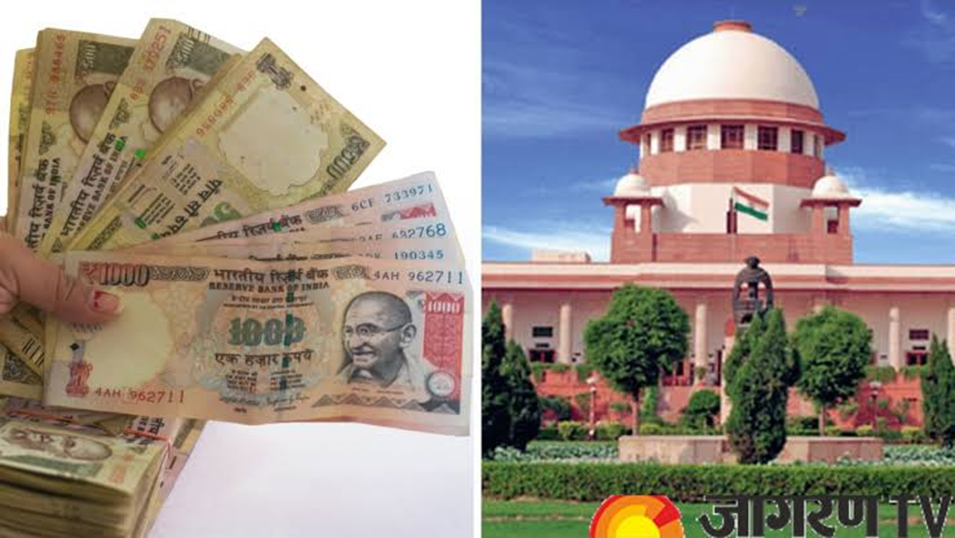 What was the issue?
What was the issue?
- Rather than the effect of the demonetization decision, the court was to consider whether the recommendation for the policy came from the government or the RBI.
Why was demonetisation challenged?
The petitioners argued that:
- The procedure to demonetise banknotes prescribed in Section 26(2) of RBI Act, 1934, was not followed.
- As per the particular section, the recommendation should have emanated from the RBI, but in this case, the government had advised the central bank, following which it made the recommendation.
- The petitioners accused the government of withholding documents related to the decision-making process from the court and raised doubts about whether the quorum as required for the RBI Central Board meeting was met.
The government and the RBI’s responses:
- The said Section does not talk about the process of initiation. It only says that the process will not end without the last two steps outlined in it.
- The central bank also pointed out that the quorum as determined by RBI General Regulations, 1949, was met for the Central Board meeting.
- Besides the RBI Governor and two Deputy Governors, five directors nominated under provisions of RBI Act were present. So, the requirement that three of them should be nominated under the law “is met”.
Supreme Court’s verdict on demonetization:
- The Court said, there was a reasonable nexus between the objects and the means to achieve the objects. Action cannot be struck down on the basis of the doctrine of proportionality.
- The central government’s decision was after RBI board’s approval which shows in-built safeguard against centre’s powers. It cannot be said that there is excessive delegation of power under the RBI Act to the Centre which is answerable to the Parliament.
- The court cannot supplant the wisdom of executive with its wisdom. Decision-making process cannot be faulted merely because the proposal emanated from the centre.
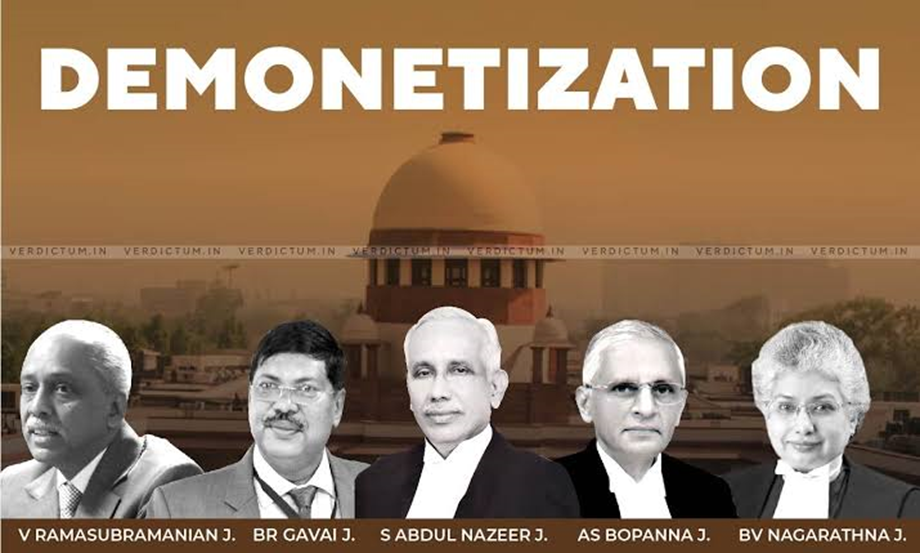
The dissenting judgement:
The sole woman judge, Justice B.V. Nagarathna, on the five-member Bench disagreed with the majority. In her dissenting judgement, she said:
- While the measure was “well-intentioned”, it was to be declared “unlawful purely on legal grounds”.
- The record demonstrates there was no independent application of mind by the RBI. There was no time for the bank to such an independent application of mind.
- As per Section 26(2), the proposal for demonetisation is to emanate from the central board of the RBI. The concurrence given by the RBI to such a proposal cannot be construed as a “recommendation” under Section 26(2) of the RBI Act.
What Is Demonetization?
Demonetization is the act of stripping a currency unit of its status as legal tender. It occurs whenever there is a change in national currency.
- The current form or forms of money is pulled from circulation and retired, often to be replaced with new notes or coins.
- Demonetization has been used as a tool to stabilize the currency and fight inflation, facilitate trade and access to markets, and push informal economic activity into more transparency and away from black and gray markets.
- A famous example of demonetization occurred in 2016 when India demonetized 86% of its nation's currency.

|
Terms and Concepts: What is doctrine of proportionality?
In K.S. Puttaswamy vs Union of India (2017) case, the court held that any restriction placed on the right must conform to a doctrine of proportionality. This requires few tests,
|
The crypto awareness campaign - Edukemy Current Affairs
Context:
An outreach programme will be launched by the Investor Education and Protection Fund (IEPF) to create awareness of cryptocurrencies and online gaming.
The need for the outreach:
It is based on the observation that both crypto-assets and online gaming (that extends to gambling and betting) are still being promoted in a risky manner despite the recent turmoil in the sector.
What is the Investor Education and Protection Fund (IEPF)?
The Investor Education and Protection Fund (IEPF) is managed by the IEPF Authority.
- The IEPF Authority was set up in 2016 under the provisions of Section 125 of the Companies Act, 2013.
- The Authority is entrusted with the responsibility of administration of the IEPF, make refunds of shares, unclaimed dividends, matured deposits/debentures etc. to investors and to promote awareness among investors.
- Apart from focusing on areas like primary and secondary capital markets, IPEF helps investors to become aware of dubious Ponzi and chit-fund schemes and offers knowledge about the existing grievance redressal mechanisms.
Concerns about cryptocurrency:
- The cryptocurrency conundrum is caused by worries that the unregulated currency would have a destabilising impact on a nation's monetary and fiscal stability.
- Further, crypto exchanges in India are being investigated for their alleged involvement in unlawful practices such as drug trafficking, money laundering, violating foreign exchange legislation and evasion of GST.
- The crypto assets are by definition borderless and therefore, any legislation (for regulation or for banning) would require international collaboration to prevent regulatory arbitrage.
What about online gaming?
- The Ministry of Electronics and Information Technology (MeitY) has been appointed the nodal industry for online gaming (e-sports) in India.
- For e-sports, the nodal agency is the Department of Sports, under the Ministry of Youth Affairs and Sports.
- A proposed framework for Central regulation by MeitY is expected to address issues faced by the sector.
Why there is a need for crypto education?
Cryptocurrency investing can be a complex and risky endeavour as the category is extremely volatile and works round the clock. It is important for potential investors to thoroughly educate themselves before making any decision.
- As per government official, ‘Any investments where the people are being promised lucrative and assured returns, there is an element of high risk’.
- As far as investment education is concerned, IEPF aims to educate home investors, housewives, and professionals alike in rural and urban areas and teach them the basics.
What Is Cryptocurrency?
A cryptocurrency is a digital or virtual currency that is secured by cryptography, which makes it nearly impossible to counterfeit or double-spend.
- Many cryptocurrencies are decentralized networks based on blockchain technology—a distributed ledger enforced by a disparate network of computers.
- A defining feature of cryptocurrencies is that they are generally not issued by any central authority, rendering them theoretically immune to government interference or manipulation.
Examples: Bitcoin, Ethereum etc.
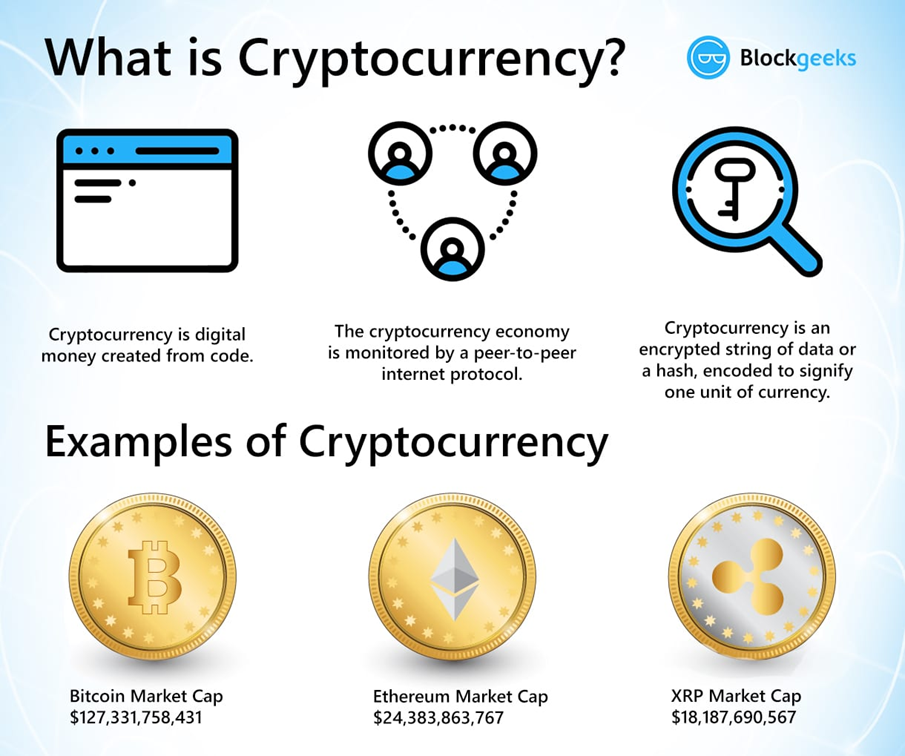
|
Terms and Concepts: What are virtual digital assets and how are they different from digital currency? In simple words, it basically means cryptocurrencies, DeFi (decentralised finance) and non-fungible tokens (NFTs). Prima facie, this excludes digital gold, central bank digital currency (CBDC) or any other traditional digital assets, and hence aimed at specifically taxing cryptocurrencies. |
India’s dilemmas in an Asian century
Editorial Analysis:
If 2022 was a momentous year for India and the rest of the world, 2023 is likely to further sharpen the geopolitical fault lines set in motion by the previous year.
Key regional and global developments:
- India had hoped an Asian century would bring stability and prosperity. This hope can be undermined by the several regional and global developments along with the geopolitical and economic rise of Asia.
- The three key developments- The withdrawal of the U.S. from much of continental Asia and the aggressive rise of China and the Ukraine war - appear to have ended the great power concert in Asia.
- Today, two major powers — Russia and China — are trying to undermine the global balance of power, with several regional powers such as Iran, Turkey and Saudi Arabia in tow.
- Asia may be headed towards more global prominence, but instability will be its possessive partner.
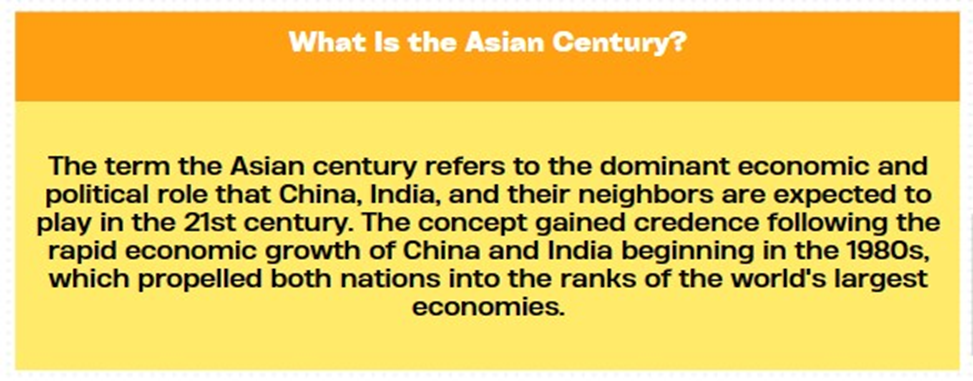
The developments and India:
- For India, the rise of the Asian century might turn out to be too steeped in harsh realpolitik for its comfort.
- A deeply status quoist, risk-averse New Delhi is inherently opposed to playing high-risk games of chicken that cross its own self-defined red lines.
- New Delhi might speak like a revisionist power, but don’t go by what it says; go by what it does.

Asian century and (multi)polarity:
There can be no meaningful Asian century in a unipolar world.
- One alternative to a unipolar world is a multipolar world with Russia, China, Japan, India and other, smaller powers asserting themselves on the global stage.
- The other alternative is a China-dominated Asia. This is the challenge for India. It is clear that a China-dominated Asia won’t serve India’s geopolitical interests.
There are also doubts that a multipolar Asia be useful to Indian interests.
- A multipolar world/Asia with new and shifting alliances, and competing coalitions vying for dominance will invariably take away from the relative ‘stability’ of the current world order where the power of the U.S. is on the decline and that of China is (still) on the rise.
- For India, multipolarity is one premised on the rule of law or peaceful coexistence.
- India values a multipolar international order, underpinned by international law, premised upon respect for the sovereignty and territorial integrity of all countries, resolution of international disputes through peaceful negotiations, and free and open access for all to the global commons.
|
The International Systems: Unipolarity, Bipolarity and Multipolarity The presence of a single superpower demonstrates a unipolar system whereas the rivalry between two superpowers indicates a bipolar system. Finally, the existence of many great powers represents a multipolar system. Unipolarity:
Bipolarity:
Multipolarity:
|
Implications of a multipolarity:
- One of the likely implications of a multipolar world in which Asia takes the center stage would be a sharpening of opposition against the current global financial order.
- The so-called weaponization of globalization and trade sanctions against Russia, and Russia’s attempts in turn at evading them with help from its Asian partners (China, Iran, Turkey, India, etc.) will pose serious challenges to dollar-based trade and Western payment systems such as SWIFT.
- The aftermath of the Ukraine war has led to a serious search in parts of Asia for alternative trading arrangements and payment mechanisms.
Delhi’s dilemmas:
New Delhi has consistently campaigned for a multipolar world where key Asian powers have a place at the high table of international politics. Yet it may hesitate to engage the emergent Asian century for various reasons.
- The Indian establishment has a deeply status quoist view of the world order despite its frequent calls for change.
- While it believes in a more democratic, orderly and rules-based world order, it recognises that major systemic changes could also be accompanied by chaos. New Delhi, therefore, likes slow, peaceful and consensual transformation of the system.
- New Delhi’s biggest fear would be an Asian century without stable multipolarity. Even if it emerges, a multipolar world is most likely going to be a passing phenomenon, to be soon replaced by a bipolar world dominated by the U.S. and China with the others bandwagoning, balancing and hedging.
- For India, a bipolar international system dominated by China and the U.S. is a bad deal. If such a world leads to bipolar rivalry, India, being a next-door adversary of China, could often be the target of Chinese ire.
- If a bipolar world leads to great power accommodation between the U.S. and China, India’s situation could be worse off.
- If the U.S. accommodates China as a peer, it could mean the U.S. accepting China’s sphere of influence. This could make India a casualty at the altar of great power politics.
Put differently, whether the U.S. and China compete or accommodate each other in a bipolar world, India has reasons to worry.
Way forward:
Finally, there is little doubt that an Asian century will be a China-dominated one. China’s growing material power – both economic and military – is already paving the way for it, especially with the U.S.’s focus firmly entrenched in the Russia-Ukraine theater.
Navigating the emergent Asian century is not going to be easy for New Delhi, but being cognisant of its many vagaries is perhaps a good start.
Towards reducing India’s prison footprint
Analysis:
President Droupadi Murmu, on November 26th, highlighted the plight of prisoners in India.
Why do we need reforms?
- Prisoners were frequently ignorant of their fundamental rights and had served lengthy sentences for very minor offenses, with their family unable to free them due to financial hardship.
- The architecture of prisons is often used as a tool to surveil, torture, and break the souls of inmates (French philosopher Michel Foucault).
- Creating solitary confinement which will have a severe detrimental effect on prisoners’ mental health.
- Creating solitary confinement which will have a severe detrimental effect on prisoners’ mental health.
Challenges present:
- Prisons in India are still governed by the Prisons Act, 1894, a colonial legislation which treats prisoners as sub-par citizens.
- Current laws provide the legal basis for punishment to be retributive, rather than rehabilitative.
- These laws are very casteist and haven't altered much since the British wrote them. Some jail manuals, for instance, continue to emphasize purity as dictated by the caste system and allocate work in prison depending on the prisoner's caste identification.
- Dalits and Adivasis are over-represented in Indian prisons. Legislations such as the Habitual Offenders Act and Beggary Laws allow the police to target them for reported crimes.
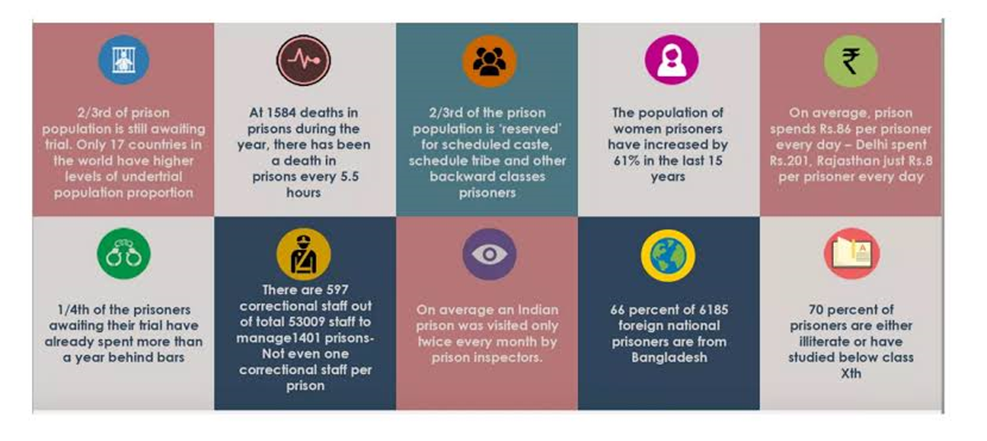 Reforms needed:
Reforms needed:
- Infrastructure: Prison facilities should have open and communal space, fresh air, and spaces for family visits and therapy.
- Address congestion in prisons in non-carceral ways: Releasing unwell or old inmates, reducing penalties, allowing bail at affordable costs, employing anti-carceral ways of holding people accountable for their crimes, and expediting trials.
- Crime should be preventive, rather than reactive.

Model Prison Manual:
For this reason, the government in 2016 introduced the ‘Model Prison Manual’ to replace the existing prison manual.
- In the manual, the government has considered aspects such as human rights, the rehabilitation of prisoners in society, the rights of female prisoners, laws for prison inspection and the right to education even for death row convicts.
Recommendations of Law Commission of India in its 268th report:
- The Commission recommended that those detained for offenses that come with a punishment of up to seven years of imprisonment should be released on completing one-third of that period and for those charged with offenses that attract a longer jail term after they complete half of that period.
- It also recommended that the police should avoid needless arrests, while magistrates should refrain from mechanical remand orders.
Justice Amitava Roy Committee Recommendations:
In 2018 The Supreme Court constituted a three-member committee, to be headed by former apex court judge Amitava Roy, to look into the aspect of jail reforms across the country and make recommendations on several aspects, including overcrowding in prisons.
Recommendations:
- Special fast-track courts should be set up to deal exclusively with petty offenses which have been pending for more than five years.
- Accused persons who are charged with petty offenses and granted bail, but who are unable to arrange surety should be released on a Personal Recognizance (PR) Bond.
- Launching a National Mission for Justice Delivery and Legal Reforms.
|
Terms and Concepts: 'Prisons' is a State subject under the State List of the Seventh Schedule to the Constitution of India.
|
‘SMART’ program for Ayurveda professionals
‘SMART’ stands for Scope for Mainstreaming Ayurveda Research in Teaching Professionals.
The program has been launched by the National Commission for Indian System of Medicine (NCISM) and the Central Council for Research in Ayurvedic Sciences (CCRAS).
- NCISM and CCRAS are the two prominent institutions under the Ministry of Ayush, Government of India for regulating medical education and conducting scientific research respectively.
- The aim of ‘SMART’ program is to boost scientific research in priority healthcare research areas through Ayurveda colleges and hospitals.
NCISM:
- The National Commission for Indian System of Medicine (NCISM) is constituted under the provisions of National Commission for Indian System of Medicine (NCISM) Act 2020.
- It has come into force from 11 June 2021.
- NCISM Act 2020 has repealed the Indian Medicine Central Council (IMCC) Act 1970.
CCRAS:
- The Central Council for Research in Ayurvedic Sciences (CCRAS) is an autonomous body of the Ministry of AYUSH (Ayurveda, Yoga & Naturopathy, Unani, Siddha and Homeopathy), Government of India.
- It is an apex body in India for the formulation, coordination, development and promotion of research on scientific lines in Ayurveda and Sowa-Rigpa system of medicine.
Indian Science Congress 2023 - Edukemy Current Affairs
108th Indian Science Congress (ISC) was inaugurated on 3rd January, 2023.
 The 108th annual session of ISC will be held at Rashtrasant Tukadoji Maharaj Nagpur University, which is also celebrating its centenary this year.
The 108th annual session of ISC will be held at Rashtrasant Tukadoji Maharaj Nagpur University, which is also celebrating its centenary this year.
Theme: The focal theme of this year’s ISC is “Science and Technology for Sustainable Development with Women Empowerment”.
Organizing body: The Indian Science Congress Association (ISCA) organizes the annual Indian Science Congress.
- ISCA is a professional body under Department of science and technology, Ministry of Science and Technology.
- The Indian Science Congress was first held in 1914.
“VIRAASAT” Sari Festival - Edukemy Current Affairs
The Ministry of Textiles is organizing the VIRAASAT festival to celebrate 75 handwoven Saris of India.
“VIRAASAT” is a Sari Festival in India that promotes traditional saris and provides a platform where traditional weavers can exhibit and sale handcrafted varieties of Saris.
FAO Approves India's Millets Year
India's proposal to observe an International Year of Millets in 2023 was approved by the Food and Agriculture Organisation (FAO) in 2018 and the United Nations General Assembly has declared the year 2023 as the International Year of Millets.

Places in News- Donbas:
Russian forces have "completely destroyed" the industrial Donbas region.
- Donbas is a region in southeastern Ukraine.
- It is a large mining and industrial region of southeastern Europe, notable for its sizable coal reserves.
- The industrial area of the Donbas includes much of the Ukrainian oblasti (provinces) of Donetsk and Luhansk.
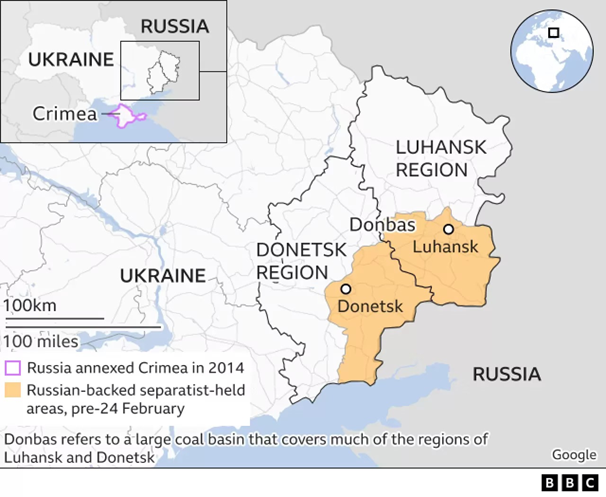
Didir Suraksha Kawach - Edukemy Current Affairs
Launched by the West Bengal government recently.
- The programme will see 3.5 lakh party leaders reach every block and cover 2 crore families in 60 days, with workers staying in villages to understand the problems faced by locals and promoting the TMC government’s flagship programmes.
- An app, ‘Didir Doot’, has also been developed for people to register their problems.
Gujarat’s first woman Chief Secretary passes away

Gujarat’s first woman Chief Secretary Dr. Manjula Subramaniam, a 1972 batch Indian Administrative Service (IAS) officer of Gujarat cadre, passed away recently.
- She served as the first woman Chief Secretary of Gujarat in 2008-09.
Where is the Gaza Strip? - Edukemy Current Affairs
The Gaza Strip is an entirely artificial creation that emerged in 1948 when roughly three-fourths of Palestine's Arab population was displaced, in some cases expelled, during the course of Israel's creation. And most of the refugees were sort of scattered across the region in neighboring countries like Jordan, Syria and Lebanon.
- Some went to the West Bank, which came under Jordanian rule after 1948. And a very large number went to the Gaza Strip, which is this tiny little coastal strip between Egypt and what is now Israel. Today, the population of Gaza, about 70% of Gaza's population are refugees.
Who controls it?
Hamas forcibly took control over the Gaza Strip in 2007. Shortly thereafter, the Israelis imposed a complete closure on Gaza's borders. They declared Gaza to be an enemy entity. Of course, Gaza is not a state.
- Hamas, of course, is viewed by Israel and by much of the international community as a terrorist organization, including the United States, for their history of attacks on civilians and so forth.

Why was it in News?
The 58th anniversary of the Fatah movement was celebrated by the militants at their military training camp in Khan Younis, southern Gaza Strip.
Fatah, formerly the Palestinian National Liberation Movement, is a Palestinian nationalist social democratic political party and the largest faction of the confederated multi-party Palestine Liberation Organization and second-largest party in the Palestinian Legislative Council.
Borderline: Developing Border Villages
Recently, the union home minister said that borders could be permanently secured only when border villages are populated by patriotic citizens who are concerned for the country. The Government of India is paying special attention to the development of border villages, especially from a security perspective.
Scheme for border villages:
The Government has announced the Vibrant Village Programme (VVP) in the 2022 Budget, to promote development and communication in border villages.
Highlights of the scheme:
- The VVP envisages coverage of border villages on the Northern border having sparse population, limited connectivity and infrastructure, which often get left out from the development gains.
- The scheme is for funding development of “border villages with sparse population, limited connectivity and infrastructure (that) often get left out from the development gains.
- VVP includes building infrastructure such as housing, tourist centers, road connectivity, providing decentralized renewable energy, direct-to-home access for Doordarshan and educational channels, and support for livelihood generation.
- The programme envisages coverage of border villages on the Northern border having sparse population, limited connectivity and infrastructure, which often get left out from the development gains.
Current status of the programme:
- One year after it was announced, there is little clarity on the details of VVP, including on the question of whether it will cover all border areas or only the northern border with China as mentioned in the Budget.
- The MHA recently informed a Parliamentary Standing Committee that the budget provisions for the programme have been sent to the Expenditure Finance Committee for its approval.
Need for:
Prime Minister Narendra Modi had said the scheme signified the government’s “holistic approach” to ensure that these villages have all facilities.
- Holding border areas close to the rest of the country is a dynamic challenge and requires a sensitive approach.
- Borders divide people of shared ethnic and cultural heritage, who are unmoved by rivalries of nations that animate strategists. They should not be challenged to be the vanguards of patriotism.
Relevance:
- Dedication to Public Service, Empathy, Tolerance and Compassion towards the weaker-sections.
- Quality of Service Delivery, Utilization of Public Funds, Challenges of Corruption.
Share the article
Edukemy’s Current Affairs Quiz is published with multiple choice questions for UPSC exams
MCQ
Get Latest Updates on Offers, Event dates, and free Mentorship sessions.

Get in touch with our Expert Academic Counsellors 👋
FAQs
UPSC Daily Current Affairs focuses on learning current events on a daily basis. An aspirant needs to study regular and updated information about current events, news, and relevant topics that are important for UPSC aspirants. It covers national and international affairs, government policies, socio-economic issues, science and technology advancements, and more.
UPSC Daily Current Affairs provides aspirants with a concise and comprehensive overview of the latest happenings and developments across various fields. It helps aspirants stay updated with current affairs and provides them with valuable insights and analysis, which are essential for answering questions in the UPSC examinations. It enhances their knowledge, analytical skills, and ability to connect current affairs with the UPSC syllabus.
UPSC Daily Current Affairs covers a wide range of topics, including politics, economics, science and technology, environment, social issues, governance, international relations, and more. It offers news summaries, in-depth analyses, editorials, opinion pieces, and relevant study materials. It also provides practice questions and quizzes to help aspirants test their understanding of current affairs.
Edukemy's UPSC Daily Current Affairs can be accessed through:
- UPSC Daily Current Affairs can be accessed through Current Affairs tab at the top of the Main Page of Edukemy.
- Edukemy Mobile app: The Daily Current Affairs can also be access through Edukemy Mobile App.
- Social media: Follow Edukemy’s official social media accounts or pages that provide UPSC Daily Current Affairs updates, including Facebook, Twitter, or Telegram channels.

